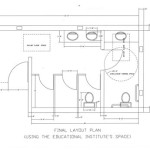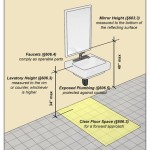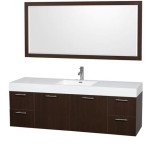2 Hole Bathroom Basin Mixer Taps: Design, Functionality, and Considerations
Two-hole bathroom basin mixer taps represent a contemporary and increasingly popular alternative to traditional single-hole taps. They offer a distinct aesthetic and, in some cases, functional advantages that appeal to homeowners and designers alike. This article provides a comprehensive overview of two-hole mixer taps, exploring their design variations, functionality, installation considerations, and the factors to consider when selecting the appropriate model for a specific bathroom.
The primary distinction between two-hole and single-hole mixer taps lies in their installation requirements. A single-hole tap, as the name suggests, requires only one opening in the basin or countertop for mounting. In contrast, a two-hole tap necessitates, predictably, two distinct holes. These holes accommodate the separate hot and cold water inlets, often connected to a central mixing mechanism that controls both temperature and water flow. The visual separation of the hot and cold controls is a key element of the design, contributing to its unique aesthetic appeal.
Beyond the basic function of delivering water at the desired temperature, two-hole mixer taps are available in a wide array of styles and finishes. From sleek, minimalist designs to more ornate, traditional options, there is a two-hole mixer tap to complement virtually any bathroom decor. The materials used in their construction also vary, with common choices including chrome, stainless steel, brushed nickel, and even brass or copper finishes. The choice of material not only affects the appearance of the tap but also its durability and resistance to corrosion.
Aesthetic Versatility and Design Considerations
One of the most significant advantages of two-hole basin mixer taps is their aesthetic versatility. The separation of the hot and cold controls allows for greater design freedom, enabling manufacturers to create visually striking and unique tap designs. This is particularly evident in modern bathroom designs, where clean lines and minimalist aesthetics are highly valued. The two-hole configuration can contribute to this clean look by reducing the visual clutter around the basin.
The spacing between the two holes can also vary, depending on the specific model. This allows for flexibility in installation, accommodating different basin sizes and countertop configurations. It's crucial to carefully consider the dimensions of the tap and the available space before making a purchase to ensure a proper fit. Furthermore, the height of the spout and the reach of the tap are important factors to consider, particularly in relation to the size and shape of the basin. A spout that is too low or too short may result in water splashing outside the basin, while a spout that is too high may be aesthetically unappealing.
The design of the handles or levers controlling the water flow and temperature is another key aesthetic consideration. Some two-hole mixer taps feature traditional cross handles, while others utilize levers or joystick-style controls. The choice of handle style should complement the overall design of the bathroom and be comfortable to use. Ergonomics play a crucial role in the functionality of the tap, as frequently used items should be easy and intuitive to operate.
The finish of the tap is also a significant aesthetic consideration. Chrome is a popular choice due to its durability and resistance to corrosion. Stainless steel offers a similar level of durability but with a slightly different aesthetic. Brushed nickel provides a softer, more muted appearance, while brass and copper finishes can add a touch of warmth and luxury to the bathroom. The choice of finish should coordinate with the other fixtures and fittings in the bathroom, such as the showerhead, towel rails, and cabinet hardware.
Functional Benefits and Technical Aspects
Beyond aesthetics, two-hole basin mixer taps can offer certain functional benefits. The separate hot and cold controls allow for more precise temperature adjustment in some models. This is particularly useful for individuals who are sensitive to temperature changes or who require very specific water temperatures for certain tasks. The separation can also simplify the internal mechanisms of the tap, potentially leading to increased reliability and longevity.
However, it's important to note that the functional advantages of two-hole mixer taps are not always significant compared to high-quality single-hole mixer taps. Modern single-hole mixer taps often incorporate sophisticated thermostatic mixing valves that provide accurate and consistent temperature control, even when water pressure fluctuates. The choice between a two-hole and single-hole mixer tap is therefore often more a matter of personal preference and aesthetic considerations than functional superiority.
The internal workings of a two-hole mixer tap typically involve a central mixing cartridge or valve that combines the hot and cold water streams to achieve the desired temperature. The quality of this cartridge is crucial to the performance and longevity of the tap. High-quality cartridges are typically made from durable materials such as ceramic or brass and are designed to withstand the wear and tear of daily use. It's important to choose a tap with a reputable cartridge to ensure reliable operation and minimize the risk of leaks or failures.
Water pressure requirements should also be taken into consideration when selecting a two-hole mixer tap. Some models are designed to operate effectively even at low water pressure, while others require higher pressure to deliver optimal performance. If the water pressure in the bathroom is known to be low, it's crucial to choose a tap that is specifically designed for low-pressure systems. This will ensure that the tap provides an adequate flow rate and that the mixing mechanism functions correctly.
Installation Considerations and Plumbing Requirements
The installation of a two-hole basin mixer tap is generally more complex than the installation of a single-hole tap. This is due to the need for two separate water supply lines and the proper alignment of the two holes in the basin or countertop. It's generally recommended that a qualified plumber perform the installation to ensure that the tap is properly connected and that there are no leaks.
Before installing a two-hole mixer tap, it's crucial to ensure that the basin or countertop has been pre-drilled with the correct hole spacing. The hole spacing will vary depending on the specific model of tap, so it's important to consult the manufacturer's specifications before drilling any holes. If the holes are not properly aligned, it may be difficult or impossible to install the tap correctly.
The water supply lines to the tap should be properly connected to the hot and cold water pipes in the wall. It's important to use flexible connector hoses to allow for some movement and to prevent stress on the pipes. The hoses should be securely tightened to prevent leaks. It's also a good idea to install shut-off valves on the water supply lines to allow for easy maintenance and repairs in the future.
After the tap has been installed, it's important to test it thoroughly for leaks. Turn on both the hot and cold water and check all connections for any signs of water leakage. If any leaks are detected, tighten the connections or replace any faulty parts. It's also a good idea to check the water flow rate and temperature to ensure that the tap is functioning correctly. If the water flow is too low or the temperature is not consistent, there may be a problem with the mixing cartridge or the water supply lines.
Furthermore, consideration should be given to the material of the basin or countertop. Some materials, such as granite or marble, may require specialized drilling techniques to avoid cracking or chipping. It is always advisable to consult with a professional installer who has experience working with the specific material being used.
Finally, understanding local plumbing codes is essential. Building regulations often dictate specific requirements for water supply lines, drain connections, and backflow prevention. Failure to comply with these codes can result in fines or delays in obtaining necessary permits. A qualified plumber will be familiar with these regulations and can ensure that the installation meets all applicable requirements.

Double Hole Basin Hot And Cold Water Faucet Bathroom Sink Mixing Valve Switch Com

Bathroom Basin Bath Tub Mixer Faucet 2 Hole Chrome Single Handle Taps Wall Mount

Boyel Living 2 Double Handle Wall Mounted Bathroom Kitchen Faucet Basin Mixer Taps In Matte Black With Rough Valve Blwf0114 2mb The Home Depot

Luxury Antique Brass Single Handle Bathroom Wash Basin Mixer Taps 2 Hole Deck Mounted Swivel Spout Vessel Sink Faucets Xt962

Kensington 2 Tap Hole Bridge Basin Mixer With Plug Chain Waste Swivel Spout Quarter Turn White Accent Sku Ke10 Burlington Bathrooms

Gold Widespread Waterfall Bathroom Sink Faucet 2 Handle 3hole Basin Mixer Tap Com

Widespread Bathroom Basin Sink Faucet Led Spout 2 Handle 3 Hole Mixer Tap Chrome Com

Bathroom 2 Handle Basin Mixer Single Hole Sink Tap Faucet Antique Ceramic Base

Deck Mounted Chrome Finish Faucet Two Holes Bathroom Filler Basin Mixer Tap

Brushed Nickel Bathroom Faucet For Sink 2 Hole Handle Centerset Mixer Tap Stainless Steel Faucets 360 Swivel Spout Deck Mounted Lavatory Vanity Rv With Pop Up Drain And







